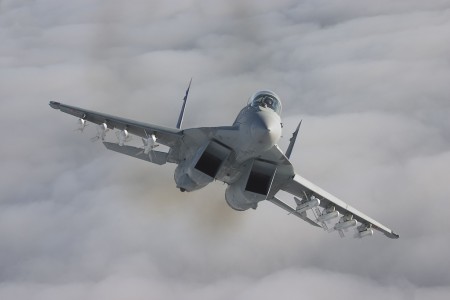
This article was originally published by the Institute for the Study of War (ISW) on 20 April 2016.
Russia remains a decisive actor in Syria despite announcing its limited drawdown on March 14. It has since reshaped the nature of its deployment and military operations in ways that continue to bolster the Assad regime’s position on the ground as well as at the negotiating table, while allowing Russia to maintain its strategic military foothold along the Eastern Mediterranean. Russian military contributions continue to shape the battlefield momentum of pro-regime operations through the deployment of alternative assets to theater such as advanced rotary wing attack aircraft. Russia retains the capacity to escalate its fixed-wing strikes to support pro-regime operations, as shown in operations against ISIS in Palmyra in late March and more recently against armed opposition forces in Aleppo.
Russian air operations pivoted once again to Aleppo as of April 6, following weeks of strikes primarily carried out in support of pro-regime ground operations against ISIS in central Homs Province. Pro-regime forces supported by Russian and regime airstrikes have resumed operations to encircle and besiege armed opposition forces in Aleppo City. Russian air operations have regularly targeted opposition-held terrain in Aleppo province throughout its air campaign in Syria, beginning condition-setting efforts for pro-regime operations to encircle and besiege Aleppo City as early as October 2015. Russian air support has been a pivotal component of pro-regime operations to encircle Aleppo City, bringing regime forces within five kilometers of besieging opposition forces inside the city as of February 2016.
Russian airstrikes have both repelled opposition efforts to reverse gains made by regime forces south of the city and propelled regime advances in the city’s northern industrial outskirts. Russia resumed regular strikes in the vicinity of Aleppo City on April 6 in response to an opposition offensive. This new wave of strikes in Aleppo, although not yet at the levels seen in the first five months of the Russian air campaign, ultimately places the already tenuous “cessation of hostilities” agreement at risk of collapse. The escalation of both Russian airstrikes and pro-regime operations appears to be driving additional upticks of violence elsewhere in northwestern Syria, particularly on key regime frontlines in northeastern Latakia and northwestern Hama Provinces on April 18. Renewed opposition operations in this area apply additional pressure to the regime’s heartland on the Syrian coast.
Russia has changed the shape of its deployment to meet the needs of the Syrian regime rather than scaling back its operations in theater. Russia has deployed additional installments of advanced attack helicopters in the past month, allowing Russia to carry out dynamic strikes and provide close air support in accordance with ongoing pro-regime ground operations. Activist sources reported that Russia has deployed additional rotary-wing attack aircraft to Bassel al-Assad International Airport in Latakia as well as the Shayrat, and T4 Airbases in central Homs, including installments of advanced Mi-28N ‘Havoc’ Helicopters. Advanced helicopters like the Mi-28N, which the Russian Ministry of Defense (MoD) confirmed on April 4 was in use in Syria, would be especially useful in clearing operations against the remaining ISIS-held areas of eastern Homs. Russia prioritized the regime’s front with ISIS in central Homs in March 2016, as demonstrated by the presence of Russian military advisers on the ground and the eventual deployment of de-mining personnel to clear Palmyra. While the operation achieved pro-regime objectives in securing terrain lost to ISIS in May 2015, it also allowed Russia to forward the narrative that it acts as a constructive international arbiter to the Syrian conflict and is an effective partner in the fight against terrorism while it continues to target moderate elements of the opposition on other fronts.
The following graphic depicts ISW’s assessment of Russian airstrike locations based on reports from local Syrian activist networks, Syrian state-run media, and statements by Russian and Western officials. This map represents locations targeted by Russia’s air campaign, rather than the number of individual strikes or sorties.
Find the map here….
High-Confidence reporting. ISW places high confidence in reports corroborated both by official government statements reported through credible channels and documentation from rebel factions or activist networks on the ground in Syria deemed to be credible.
Low-Confidence reporting. ISW places low confidence in secondary sources that have not been confirmed or sources deemed likely to contain disinformation.
Genevieve Casagrande is a Syria Research Analyst at the Institute for the Study of War where she focuses on the Syrian opposition.
For more information on issues and events that shape our world, please visit ISN Security Watch or browse our resources.

